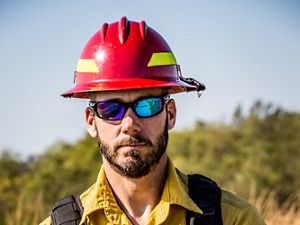Putting Fire on the Ground
E.J. Bunzendahl partners with TNC to conduct prescribed burns in the Daniel Boone National Forest.
E.J. Bunzendahl was a pre-med junior at the University of Kentucky when she spent a summer as a Girl Scout camp counselor in Colorado. She came back from the summer ready to trade in her biology major for something that was a better fit. She chose natural resources and conservation management.
“Growing up, the woods were my playground,” Bunzendahl says. “In fact, I have three sisters and very frequently my mom would pack us a lunch and we’d be gone to the woods all day.”
That love of the woods and her interest in environmental science eventually led Bunzendahl to a career in fire management and to a collaboration with TNC that has burned tens of thousands of acres at Daniel Boone National Forest to help maintain healthy forests and reduce the risk of wildfires.
Entering a Career in Fire Management
“I took a seasonal position with the Office of Kentucky Nature Preserves, and I was introduced to prescribed fire.”
Bunzendahl got the training she needed, but never got the weather to implement prescribed fire during her time there. She got another seasonal position, this time with the Kentucky Division of Forestry, and finally got experience in wildland fire management.
“It didn’t take long for me to discover that wildland fire was the perfect mix of physical challenge and mental strategy,” Bunzendahl says. “It was a good mix of working hard physically and really strategizing.”
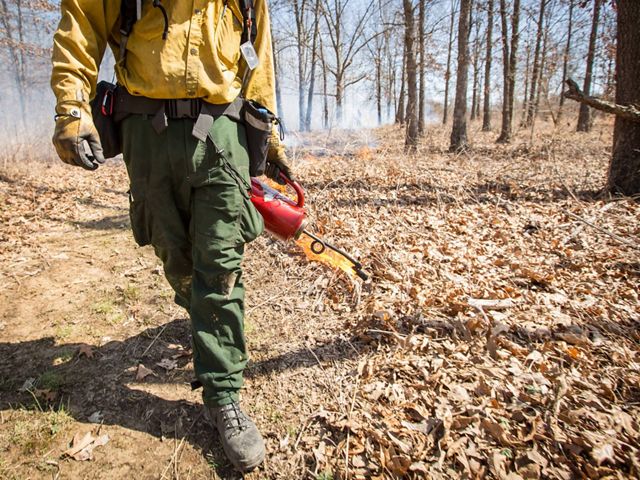
Women in Fire
During her time at the Division of Forestry, Bunzendahl was able to take a season off to work with the Logan Interagency Hotshot Crew, a U.S. Forest Service fire suppression group.
“Being a part of that hotshot crew for a summer was an eye-opening experience,” she says. “It was a great crew. It was fun to be part of such a well-oiled machine. We were all over Utah, Idaho, Wyoming and Nevada, fighting wildfire.”
Quote: E.J. Bunzendahl
I’ve seen things change since I first got into fire in 1994. I often say, I will know we finally have enough women in fire when I have to stand in line at the women’s bathroom.
Bunzendahl worked for the Division of Forestry for six years before joining the Daniel Boone National Forest as a senior firefighter. One thing she noticed as her career was unfolding was the lack of women in fire.
“There were very few women working in wildland fire in the early days of my career,” Bunzendahl says. “There were so many times when I was the only woman working on a 20-person crew out west, so many times I’ve been the only woman in fire training classes.”
Bunzendahl says she has watched the numbers of women in fire increase quite a bit throughout her career.
“I’ve seen things change since I first got into fire in 1994,” she says. “I often say, I will know we finally have enough women in fire when I have to stand in line at the women’s bathroom.”
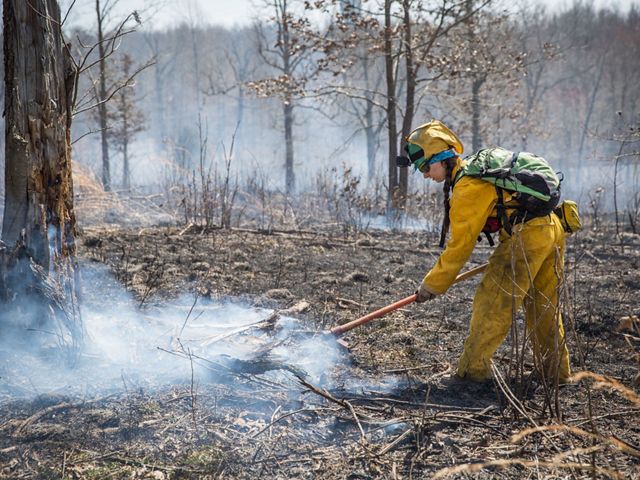
Partnering on Controlled Burns at Daniel Boone National Forest
Bunzendahl now works with The Nature Conservancy to put fire on the ground in the Daniel Boone National Forest. Through an interagency agreement, the two groups combine teams to achieve burns on more acreage than they could alone.
“TNC has helped us meet our prescribed fire goals in so many ways,” Bunzendahl says. “They have been really innovative, really good at stretching our agreement funding to help us get more assistance on the ground on our burns. We could not implement our program as fully as we need to without this assistance.”
In 2019, TNC assisted the Daniel Boone National Forest on about 15,000 acres of burns. TNC has also been a leader in prescribed fire training in Kentucky, particularly through the Kentucky Prescribed Fire Council.
“The Fire Council helps all of our interagency fire partners,” Bunzendahl says. “We’ve partnered together to help in training, and TNC has shared a huge leadership role.”
Prescribed fire can improve forest composition and reduce the risk of wildfire by removing fuels such as underbrush from the forest. By combining prescribed fire with wildfire suppression, fire managers can enhance wildlife habitat and also safeguard human communities.
“Fire has a huge role to play in our ecosystem,” Bunzendahl says. “But we need to make sure it’s a planned role in our ecosystem.”
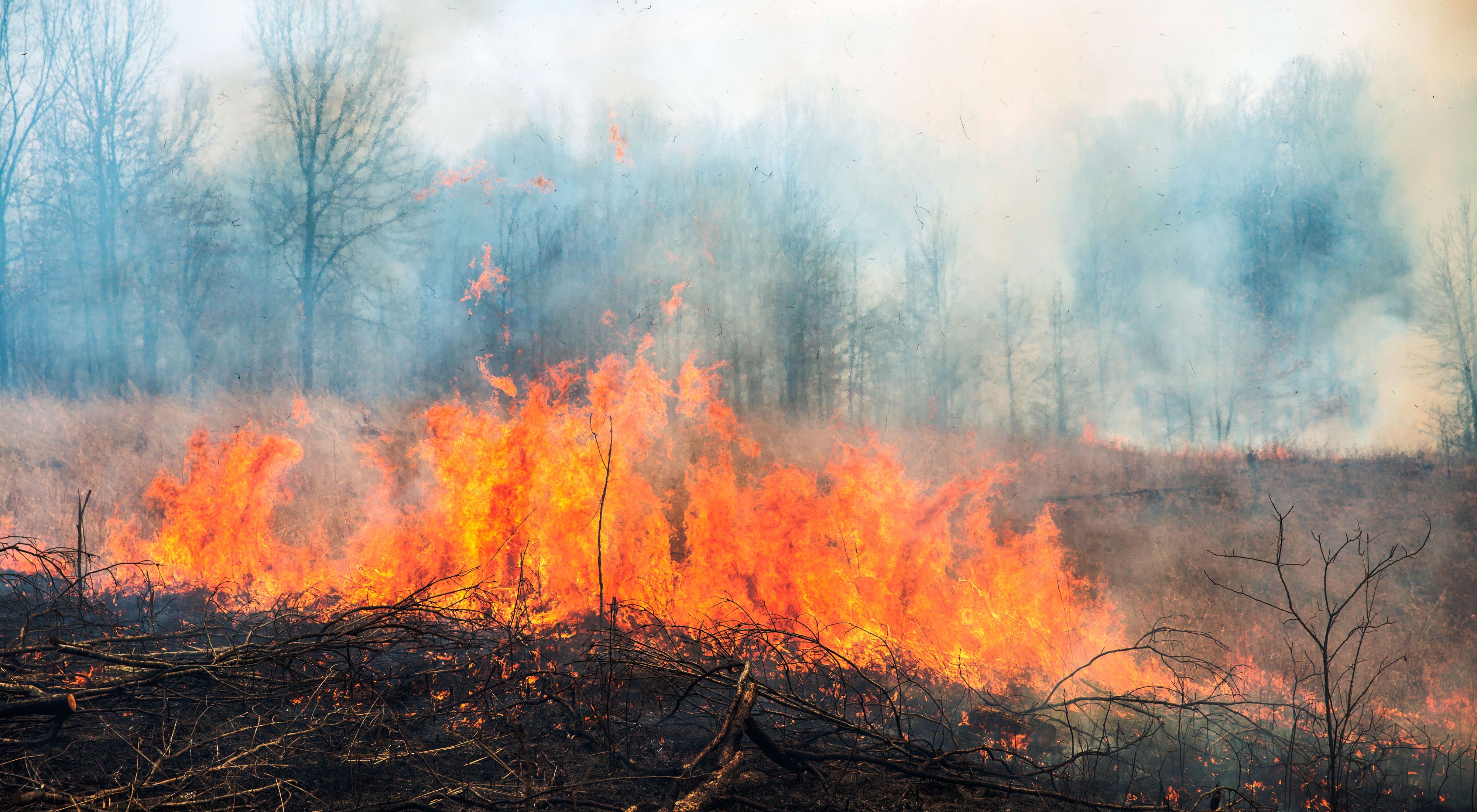
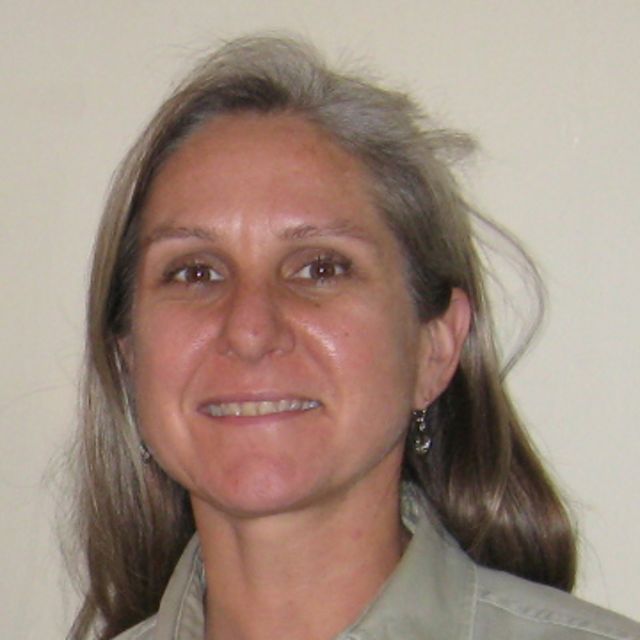
.jpg?crop=222%2C0%2C3556%2C2667&wid=300&hei=225&scl=11.853333333333333)
